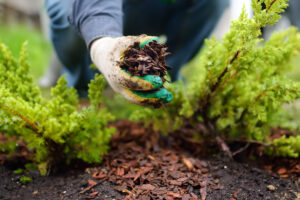Plant healthcare is critical to the survival of an ecosystem. Floods may severely harm trees and bushes, which are essential to our ecology. This article will discuss methods for helping flooded trees and shrubs recover and continue to contribute to our ecosystem.
Recognizing the Signs of Flooding Damage
When floods hit, they may inflict extensive damage to trees and bushes. Waterlogged soil, for example, might smother the roots and prevent them from getting essential nutrients. Another issue is that trees can become uprooted, harming their general health.
It is vital to recognize that each sort of damage has a particular impact on trees and shrubs, and recognizing this impact is critical to their recovery. As a result, it is essential to take the appropriate steps to give the required plant healthcare and assist them in recovering from the harm caused by floods.
It’s critical to examine the damage and determine the degree of care needed to help flood-damaged trees and plants. Stress symptoms, such as wilting, yellowing leaves, or broken branches, are sometimes early warning signs of damage. It’s important to watch for these indicators and take the required precautions to guarantee the plants recover.
Short-term and Long-term Plant Healthcare
Providing immediate care to trees and shrubs during a flood is essential. To do this:
- Clear away any debris gathered around the plants’ bases.
- To stop additional harm, prune any broken or damaged branches.
- Stake uprooted trees to keep them from falling over.
- Eliminate any standing water around the plants’ bases.
- Use a fungicide or other treatment to prevent mold growth or other diseases that thrive in damp environments.
- Applying fertilizer just after a flood might bring additional stress to the plants. Before adding any fertilizers, wait until the plants have had a chance to recover.
It’s equally vital to provide long-term plant healthcare. To accomplish this:
- To reduce waterlogging, improve soil drainage by adding organic matter or building drainage channels.
- Consider planting more resilient plants that thrive in moist environments.
- Build rain gardens or other elements that may absorb extra water after heavy rains.
- Regular watering, fertilizing, and insect control are examples of continuing care.
- Monitor the plants for symptoms of stress and take appropriate measures to remedy any concerns.
- Consider installing a drainage system or redirecting rainwater away from the plants to prevent future flooding.
You may help maintain the long-term health and well-being of your trees and shrubs by following these actions and reducing the chance of damage from future flooding episodes.
Plant Heathcare Recap
Keep in mind the critical function that trees and shrubs play in our environment, as well as the catastrophic impact that floods may have on them. We can help these plants recover and thrive by taking prompt action after a flood and providing continued long-term care.
With these simple steps, you may significantly improve your trees’ and plants’ health and vitality. So let us pull up our sleeves, go out in the garden, and assist these vital ecosystem members in recovering from the effects of floods!
